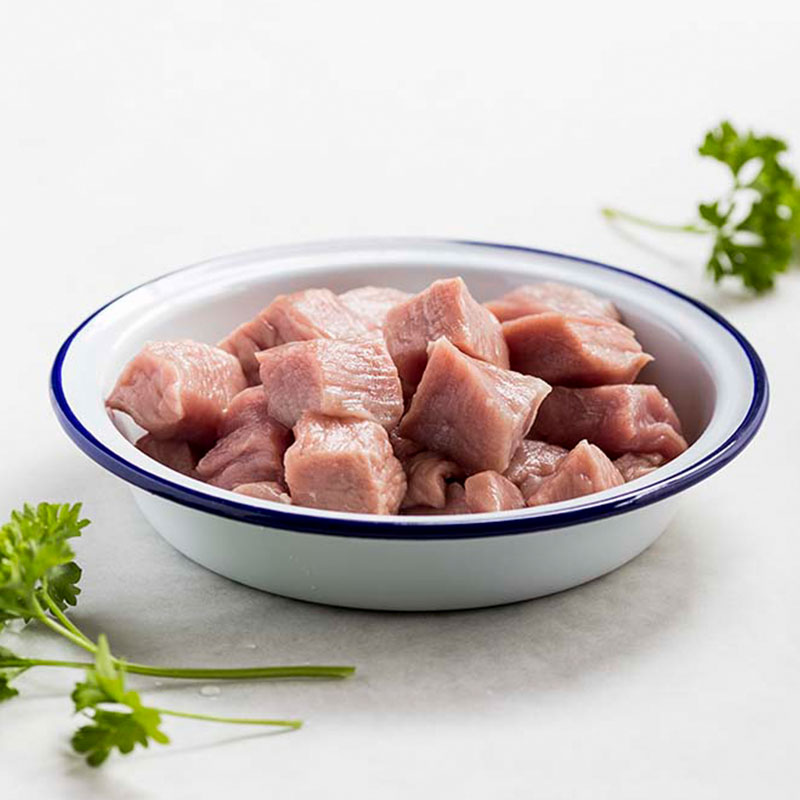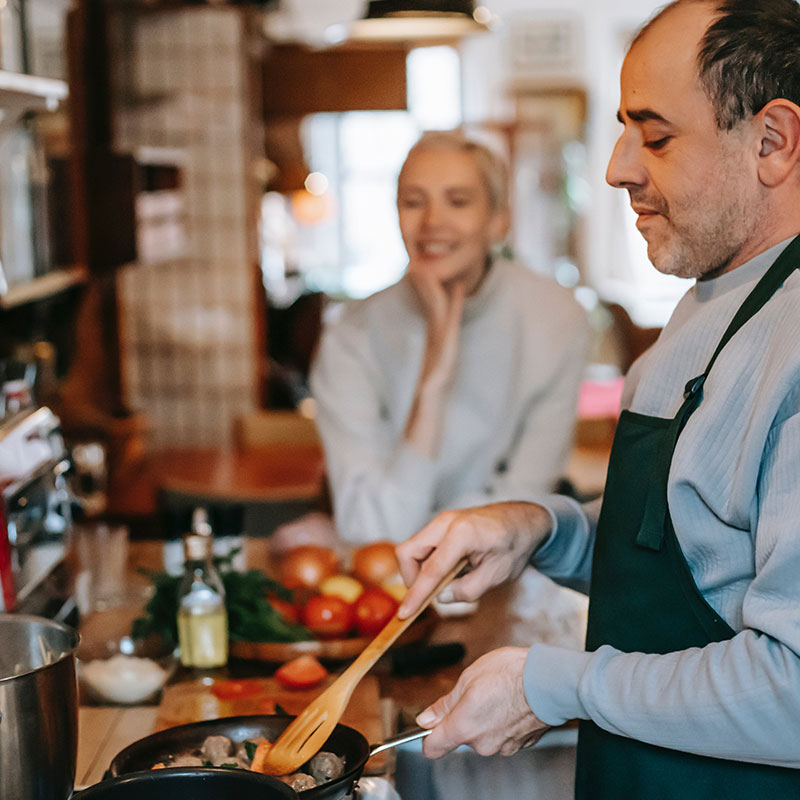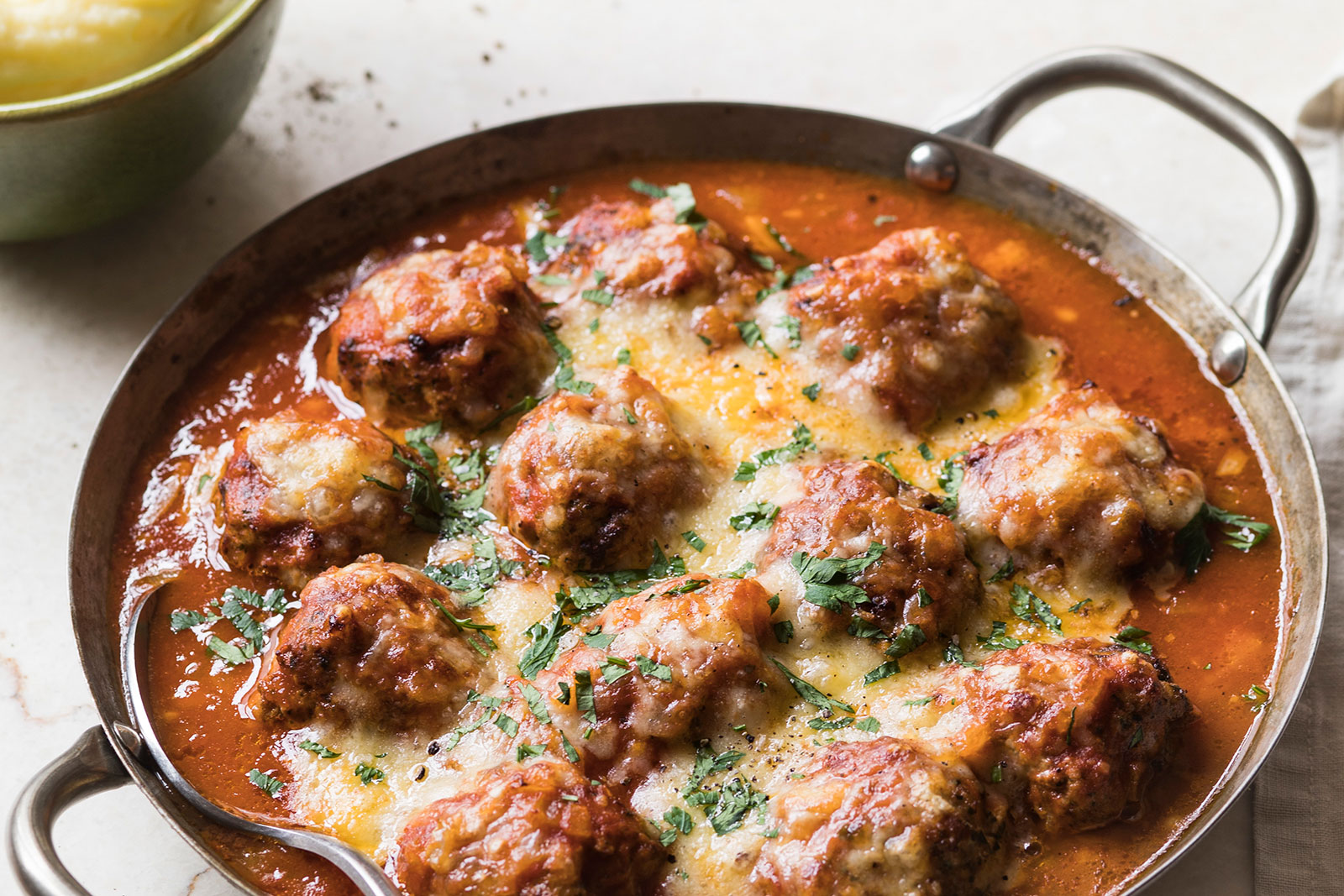Perfecting the art of the sauté
So many recipes will start with a simple request to sauté. But how exactly do you sauté, and why is it important?
Sauté is French for “to jump”. This gives us a first tip on what it takes to successfully sauté. It means moving your ingredients quickly in the pan to get the pork cooked well, with a bit of crisp on the outside but still moist on the inside.
If you’re looking to perfect your sauté skills, here’s our top four tips:
1. Heat your pan to a medium-high heat

No matter what you’re sautéing, the first step is to heat your pan on the stove, and make sure you heat a dry pan before you add the oil or butter.
But how do you know it’s hot enough? Add a drop of water to the pan, if it sizzles straight away and evaporates then your pan is hot enough.
Then you can add your butter or oil. You just need a small amount, and ideally you want to use a high-smoke-point oil(sunflower is a great option, extra virgin olive oil will smoke at a lower heat so it is not the best choice for sauteing), butter, or ghee to the pan. If it’s the right heat, oil should immediately begin to shimmer, butter to foam lightly, and ghee to melt rapidly.
You need to then make sure you keep that heat up as you add the pork and vegetables.
2. Don’t overcrowd the pan

While it can be tempting to tip all the pork in the pan at once to speed up the dinner cooking process, it is one fast way to ruin a good sauté.
Always make sure there is space for all the pieces in the pan to touch the bottom at the same time with a bit of room to move. Why? There are three key reasons: Having everything touch the pan at once means you can get an even browning across your ingredients. Leaving a little extra space around it gives the steam room to get away, if the pan is crowded the moisture from the steam will get trapped and you end up with steamed food rather than sautéd. And lastly, adding a large amount of food to the pan will drop the temperature suddenly and you’ll lose that high heat needed to properly sauté.
3. Dry your pork

Use a paper towel to pat dry the pork before you add it to the pan. Sauteing is a ‘dry’ cooking method, the additional moisture on the surface of the pork will get in the way of proper searing and browning.
4. Move the meat frequently, but not constantly

It doesn’t matter what utensil you use, a wooden spoon, spatula, tongs, or none at all if you’ve perfected the art of tossing. The key is in the timing. If you stand stirring the pan endlessly, the pork won’t have time to brown and develop those delicious crispy, caramelised bits. But, if you leave it too long, you’ll go past delicious and head towards black and burned on the outside. There’s a bit of practice needed to learn the right timing but start by testing out one piece, turn it and see if it’s browned, if it hasn’t yet, leave it a bit longer and try again. It’s better to check it earlier than you expect it to be ready, rather than leaving it too long - you can always leave it to cook longer but it’s difficult to rescue it once it is burnt.
Subscribe to our newsletter
Like what you see? Subscribe to our fortnightly newsletter 'Recipe Club' and be the first to know about new recipes, competitions, giveaways and more.




